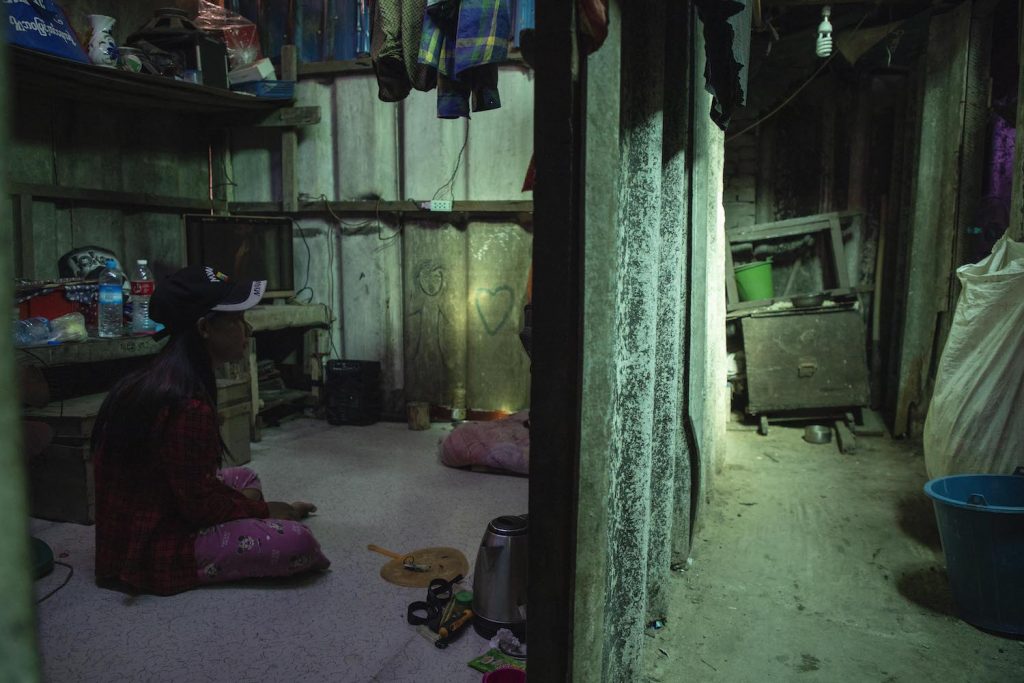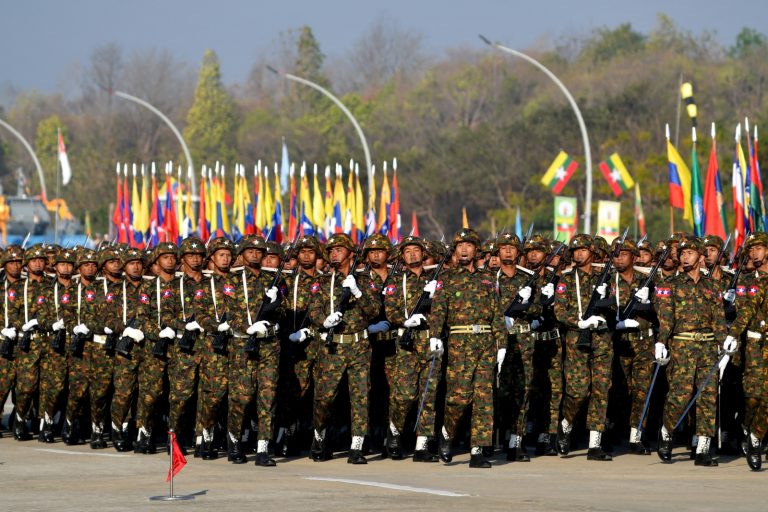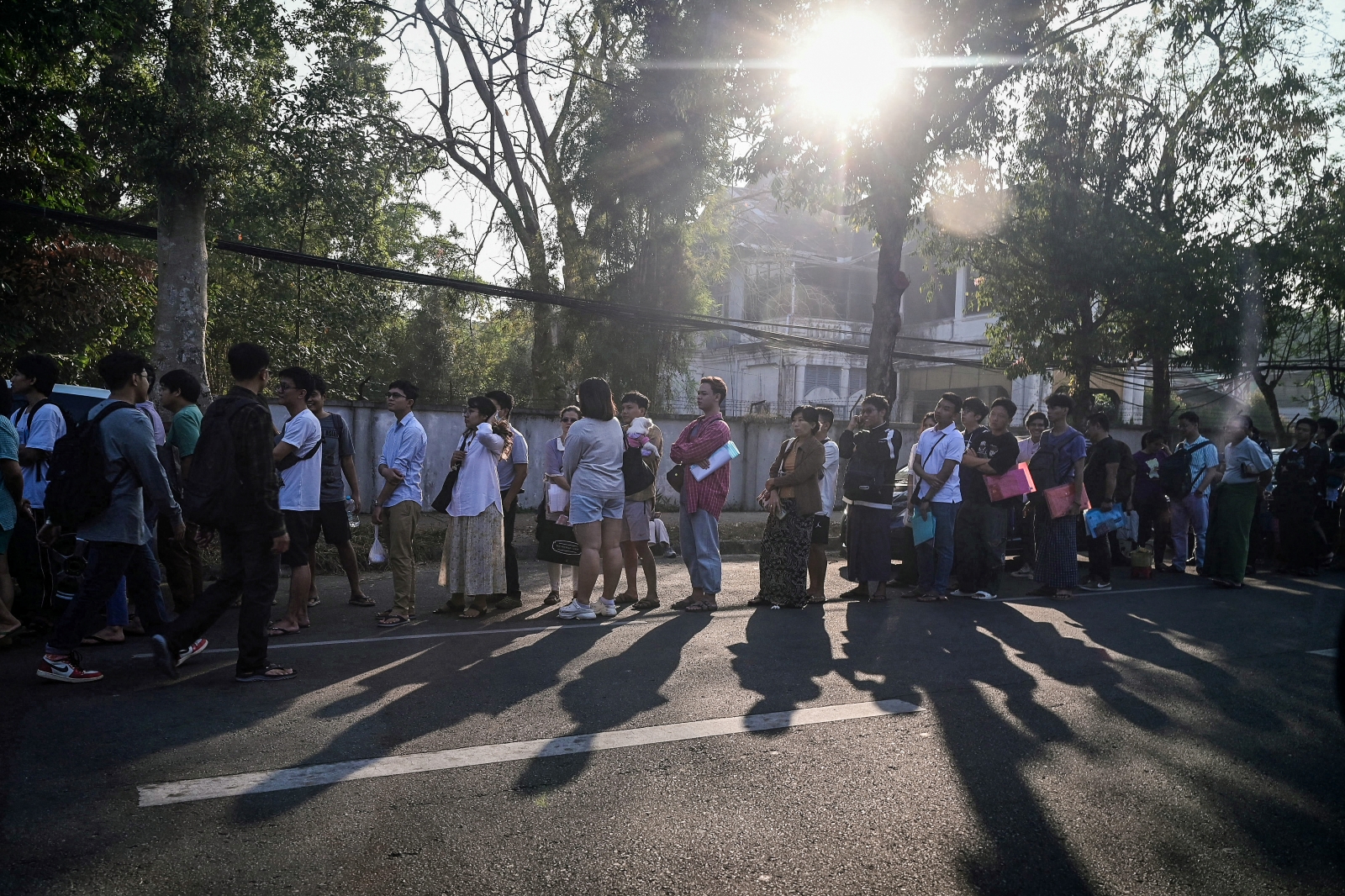The regime’s latest capital controls have spooked the business community, exacerbated the shortage of dollars and sent the kyat plummeting – and experts say the junta could be running out of foreign exchange needed for vital imports.
By FRONTIER
It’s the billion-dollar question that everyone seems to be asking: Is Myanmar’s military regime running out of money?
A series of shock policy decisions over the past week aimed at shoring up foreign currency reserves have focused attention on the junta’s finances.
On July 13, the regime-controlled Central Bank of Myanmar revoked an exemption to local companies with at least 10 percent foreign ownership that meant they did not have to automatically convert foreign exchange holdings at the official rate. The same day, banks were told to suspend overseas loan repayments, possibly forcing their clients into default.
The next day, the junta’s Ministry of Commerce decreed that exports of agricultural commodities through border trade must be carried out in dollars, and all exporters needed to show evidence of advance payment to get export clearance.
On July 21, the Central Bank reportedly ordered banks to convert any remaining foreign currency held by registered companies into kyat, except for the few who remain exempt, including those operating in Special Economic Zones.
These measures sent a clear message: the situation is desperate.
This has undermined business confidence, which had already been shaken badly by an April 3 announcement freezing foreign currency reserves in foreign banks, and requiring most of it to be converted into kyat at the official rate of K1,850. Since then, the regime has strictly controlled imports, inadvertently creating shortages of essentials such as fuel, palm oil and, most recently, gas for cooking.
Although the regime has maintained its currency peg, the lack of faith in its economic management has been apparent in the informal market, where the kyat’s gradual decline has accelerated. On July 18, the local currency fell from around K2,235 to the dollar to below K2,300, with some sources giving the rate as closer to K2,400. On July 19, it appeared to be trading for around K2,500. The exchange rate was so volatile that gold traders simply suspended sales, unsure how to price their goods.
“There’s now panic setting in. The State Administration Council is desperate to buy dollars and conserve dollars,” said one Myanmar economist, who spoke on condition of anonymity, referring to the military regime’s official name. “Because of the Central Bank’s intervention, the situation is only getting worse.”
The nation’s bank balance
Most of the regime’s bills can be paid by simply telling the Central Bank to print money. This is precisely what it did in the months after the coup, when state revenues collapsed and depositors rushed to withdraw money from private banks.
Central Bank data to the end of September 2021 shows that the amount of cash in the economy outside of banks rose from K16.05 trillion to K26.64 trillion, an increase of 66pc.
But when it comes to paying for imports, printing trillions of kyat isn’t going to work. What matters is the balance of payments – effectively, the Myanmar economy’s bank statement with the rest of the world – and the Central Bank’s foreign currency reserves, which can be called on if the balance of payments is negative.
There’s no publicly available figure for the regime’s current foreign exchange reserves, but various data provides some evidence that the regime might be running low.
Prior to the coup, the Central Bank had reserves of US$7.67 billion, but in October 2021 the regime’s Minister for Investment and Foreign Economic Relations U Aung Naing Oo told Reuters this had fallen to around $6 billion. Central Bank figures appear to confirm this decline, with a $1 billion balance of payments deficit in the July-September quarter of 2021.
Although $6 billion might sound like a lot, in an economy the size of Myanmar’s it can disappear quickly if the balance of payments remains in the red.
The trade balance is one key metric for calculating balance of payments. A collapse in imports after the coup actually pushed the trade balance into positive territory in 2020-21, according to official statistics, and Min Aung Hlaing also trumpeted a small trade surplus during the “mini-budget” from October 1, 2021 to March 31, 2022. Since then, however, the trade balance has turned negative, despite severe restrictions on imports.
Not all of Myanmar’s foreign trade is captured in the official statistics. Goods that are illicit or illegal, such as drugs or weapons, are off the books. More prosaically, each year around $2 billion of imports from Thailand – everything from whiskey to fuel to used cars – are missed because the trade goes through informal gates run by the Karen State Border Guard Force.
Trade though reflects only part of the balance of payments. Foreign currency can flow in and out of the economy in many other ways, including foreign investment, remittances, grants, loans and loan repayments, and investment outflows.
The National League for Democracy government often ran trade deficits but managed to avoid balance of payments problems or a shortage of foreign exchange because investment, aid and remittances remained strong.
The regime, in contrast, has run a balance of payments deficit despite a small trade surplus, reflecting the fact that other sources of foreign exchange have taken a big hit since the coup.
Central Bank and budget figures show that several major sources of foreign currency inflows – including foreign investment, remittances, grants and loans – have decreased sharply or disappeared entirely since last February. Meanwhile, the regime says it has continued to make payments on its foreign debt.
More recently, though, the trade balance has fallen negative. This has likely been putting more pressure on foreign currency reserves.
The World Bank’s latest Myanmar Economic Monitor, released yesterday, said these balance of payments pressures had “become acute” and it was “plausible that foreign exchange reserves have fallen to insufficient levels as at mid-2022”.
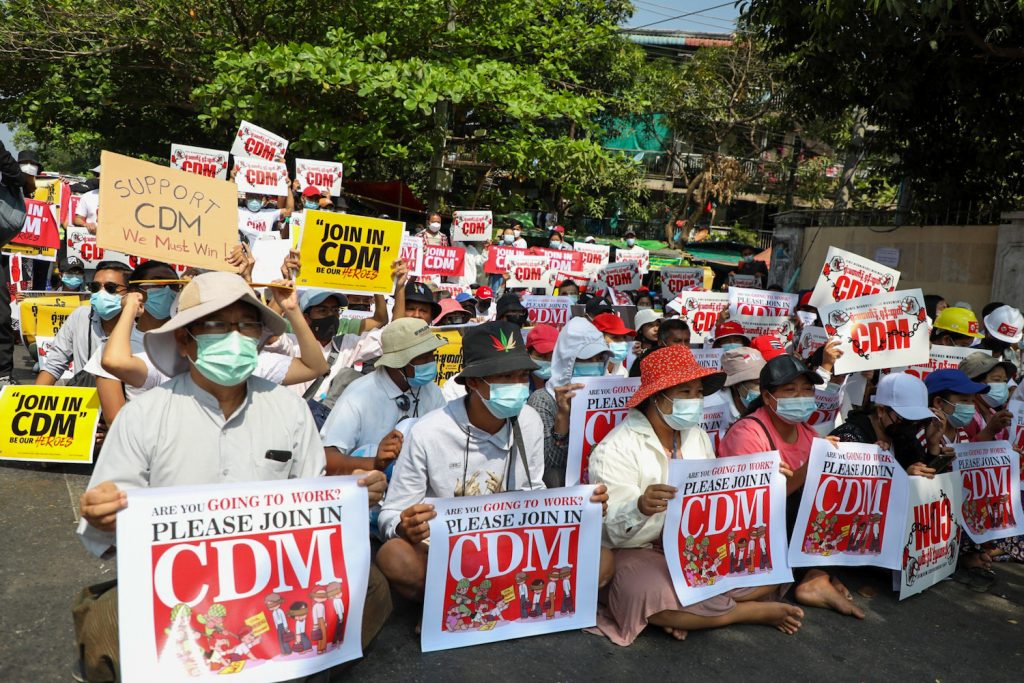
‘Things must be difficult’
Beyond the data, the snap decision on April 3 to freeze all foreign currency and forcibly convert it to kyat sent the strongest signal yet that all was not well with the regime’s finances.
Imports are now being tightly controlled, with businesses forced to seek permission from a new Foreign Exchange Supervisory Committee to transfer money to overseas suppliers.
“I really do think they [the regime] don’t have enough US dollars … Although we don’t have data, for them to have to take these actions it reflects how difficult things must be,” said a senior official at a local private bank.
The banker said the fact that importers of goods generally considered essential, like food items, have been unable to get import permits suggests reserves were low. “That shows the limited amount of dollars has to be focused on only the most essential items.”
The capital controls came at a time when Myanmar’s economy seemed to finally be stabilising after the shock of the coup, with local banks beginning to relax restrictions on withdrawals and some manufacturing, construction and retail picking up.
“It felt like the economy was coming back to some sort of normality, but the government regulations have really screwed things up,” the banker said.
One likely trigger for the capital controls was rising prices for key commodities, including fuel, palm oil and fertiliser, in the wake of the Russian invasion of Ukraine in late February, which have pushed the trade balance into deficit.
The local economist said higher commodity prices had only accelerated the underlying problem in the balance of payments, likening the balance of payments crisis to a “slow-motion train wreck”. “Since February 2021, the situation has been gradually getting worse and worse,” he said.
Dr Htwe Htwe Thein, an associate professor in international business at Australia’s Curtin University, said the regime’s policies were driving away foreign firms.
“Everything the regime is doing with forced currency conversion, it feels like going back to Dark Ages, when corruption was rampant, and the military favoured its cronies. It’s like a nightmare and it’s getting worse and worse. That’s why businesses are leaving – mostly because of the very poor business environment and erratic decision making,” she said.
A failed playbook
But the regime’s “solution” to the balance of payments problem is likely to be counterproductive, observers told Frontier.
It has effectively confiscated all foreign currency in the banking system – with a few exemptions, like foreign companies – by forcibly converting it to kyat and then limiting access to that foreign currency for imports.
“They’ve taken the dollars out of the hands of customers and they’re now in the banks but basically under the [regime’s] control,” the banker said. “They can only do it once. After that, why would anyone keep dollars in their accounts?”
Mr Kim Edwards, senior economist and programme leader for Myanmar at the World Bank, told Frontier that the policy would only help the regime in the short term.
While the policy might “initially reduce the pressure on foreign exchange reserves”, the impact is likely to decrease as businesses adapt, he said. They could do this in a range of ways, such as by keeping foreign currency, including export earnings, in offshore accounts or using informal payment channels, such as hundi.
To counteract the use of offshore accounts, the regime has announced a system of export permits for some agricultural products. But these only appear to have dampened exports by creating delays and uncertainty, and increasing export costs.
Other potential sources of foreign currency are also likely to dry up as a result of the capital controls. The ban on repayments of offshore loans, for example, will mean foreign banks are unlikely to lend to a company in Myanmar for the foreseeable future. Some foreign firms, such as mobile tower company edotco, have already said they will not invest more in Myanmar until there is clarity on whether they can get money out of the country.
Several observers suggested the measures reflect the junta leadership’s limited economic knowledge, and their natural instinct to respond to problems through stricter controls. Many of the regime’s economic policies are also similar to those deployed by former dictator Than Shwe, but a decade of liberalisation has made Myanmar’s economy bigger, more complex and more closely integrated with the global economy.
Increasingly, military officers are making key decisions. Lieutenant-General Moe Myint Tun is now head of both the Myanmar Investment Commission and the Foreign Exchange Supervisory Committee, while in June the regime transferred six lieutenant-colonels into the Central Bank.
The Myanmar Economic Monitor warned that with the authorities exerting “greater control over the allocation of resources in the economy”, there were risks of resources being “misallocated” to connected firms and individuals. Myanmar is moving towards a “system of policy making and governance that is less predictable, less clearly communicated, and characterized by more discretion in the enforcement of rules and regulations”, it said.
“The lessons from Myanmar’s economic history suggest that to the extent these trends continue, investor confidence will remain weak and the business environment will continue to suffer, constraining Myanmar’s growth potential over the longer term.”
The local economist put it bluntly. “They are pulling out policy decrees from their old textbooks, but these orders and restrictions will not address the fundamental issues,” he said.
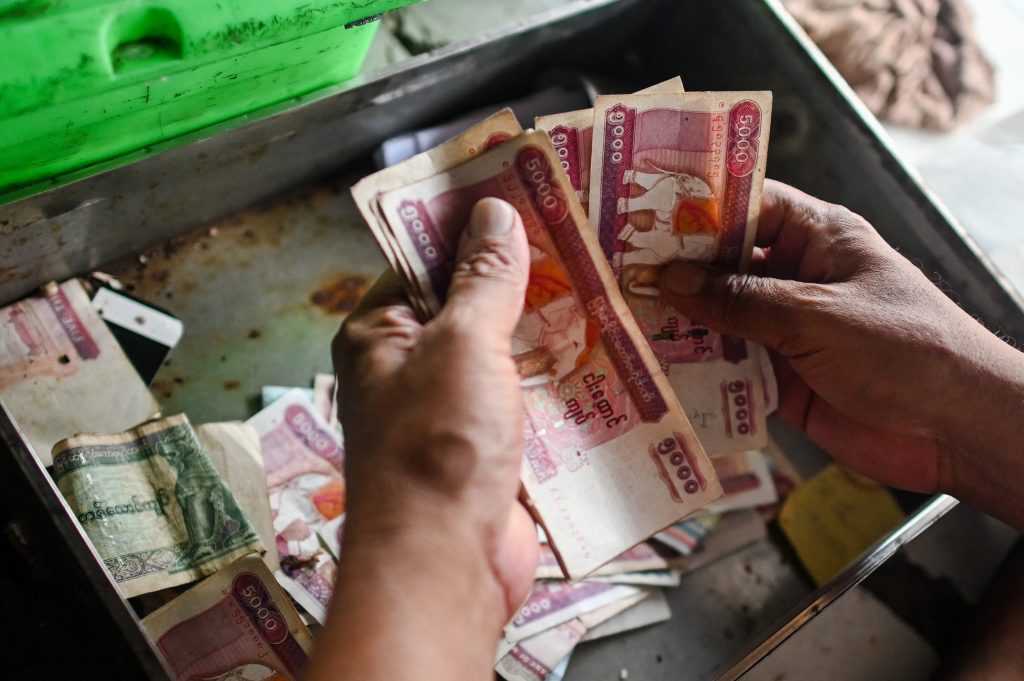
Overvaluing the kyat
The decision to fix the kyat at K1,850 to the dollar could be particularly counterproductive because it overvalues the kyat.
The regime needs exports to bring in foreign currency, but a strong kyat makes them less competitive. The gap between the market rate and the official rate – now more than 25pc – effectively acts as an export tax.
Edwards from the World Bank said the requirement that exporters convert their earnings at the official rate was “squeezing already thin margins” because most businesses are facing rising costs. “This already appears to have had a negative effect on the price competitiveness of some agricultural exports,” he said.
Meanwhile, the regime has few options to support its kyat peg. When the currency depreciated rapidly in the past, the Central Bank could sell dollars to improve liquidity and strengthen demand for kyat. The parallel rates make a dollar auction less feasible, and the regime doesn’t appear to have sufficient reserves anyway.
By reserving dollars for officially endorsed imports, the regime has starved the informal market of liquidity and driven down the kyat, Edwards said.
“The need to ensure the supply of at least some dollars at the fixed official rate has reduced the supply of dollars available in parallel markets, exacerbating the depreciation in parallel market rates,” he said.
The local banker said increased exports were the most feasible way to alleviate the shortage of dollars, but the regime’s policies – from the kyat peg and forcible conversion of earnings to export permits – are discouraging exports.
“The problem we face is there’s not enough trade. That needs to be fixed. They should be giving huge incentives to food exports, manufacturers, finding ways to get more foreign currency into the economy,” he said. “But they also haven’t figured out that things are circular; to grow exports, you need to allow imports as well. And restrictions just result in less dollars being circulated, not more.”
Whither the Myanmar economy?
Foreign currency reserves appear to be set on a downward spiral that the regime is unable to stop. The lack of foreign currency is likely to result in more restrictions on imports, and thus persistent shortages of imported goods.
As dollars become scarcer, the kyat is likely to depreciate further on informal markets because demand will outstrip supply. The regime’s reliance on money printing to fund the budget deficit will put further pressure on both inflation and the exchange rate. A privileged few will have access to commodities imported using the official exchange rate.
One business owner predicted the return of Foreign Exchange Certificates, which the former military regime introduced in 1993, and were pegged to the dollar. They were abolished in 2013 as part of economic reforms that liberalised the economy.
“When they run out of the dollars that they’ve seized, the SAC is likely to produce FEC instead,” he said. “It could do it even sooner, so that it can hold on to the dollars that it still has.”
In the meantime, he said, exporters would try to keep as much of their earnings as possible offshore. “Exporters who have been in the business for a while will be okay. They’ll just reduce the official price of their exports,” he said. “The real losers will be those businesses that don’t export anything. There aren’t many dollars left and we have to buy them at the market price. Prices of raw materials have also increased. Manufacturing costs are high and domestic demand is low.”
The local economist said the impact of the foreign exchange controls will become clearer over the next six months, but is likely to be “huge”. Already, the increased regulation has created a “thriving” black market that is only set to grow. “Everything will go under the radar,” he said.
One student who was saving to pursue a master’s degree abroad said her dream had suddenly been put out of reach.
“Just when I was about to pay the school fees, the dollar rate skyrocketed. Now, even if you have the money, it’s hard to find enough dollars in the market,” she said. “I’ll need to start saving again so I can afford the school fees, but that’s going to be hard because commodity prices are rising and our income hasn’t increased. I’m sure the dollar will keep rising – we’re all going to be in trouble.”
In another context, this economic chaos could spark the kind of social unrest that topples a government. But the regime is already fighting an insurgency on many fronts, as well as non-violent resistance in the form of boycotts and civil disobedience. The local economist said the regime’s intransigence is a recipe for economic calamity.
“They will give priority to their own survival, to the military’s interests,” he said. “But that will only make the economic situation worse.”
Htwe Htwe Thein said the regime was “cornered” because of their “own stubbornness, bad decision making, mismanagement and incompetence. They underestimated the opposition and have been unwilling to negotiate.”
A shortage of foreign currency might not force them to “give up”, but she said it could potentially push them into talks. “If they themselves and their families start to be affected by economic hardship, it might make them come to the dialogue table – provided there is the right negotiator.”


